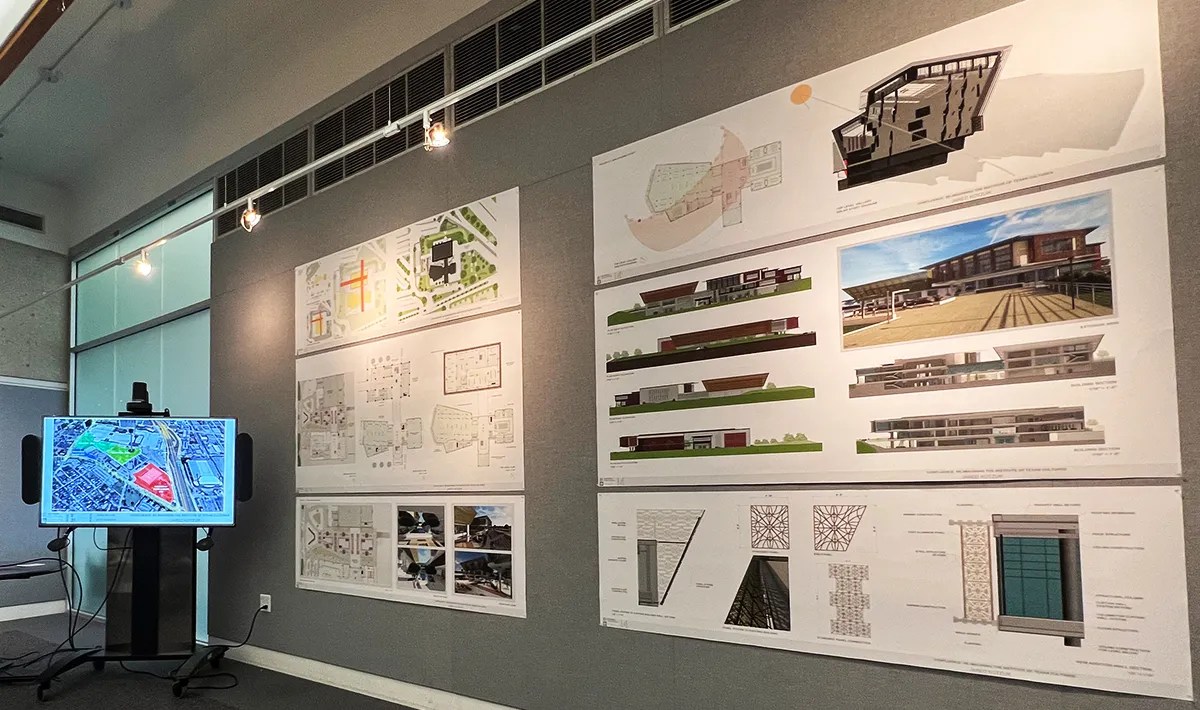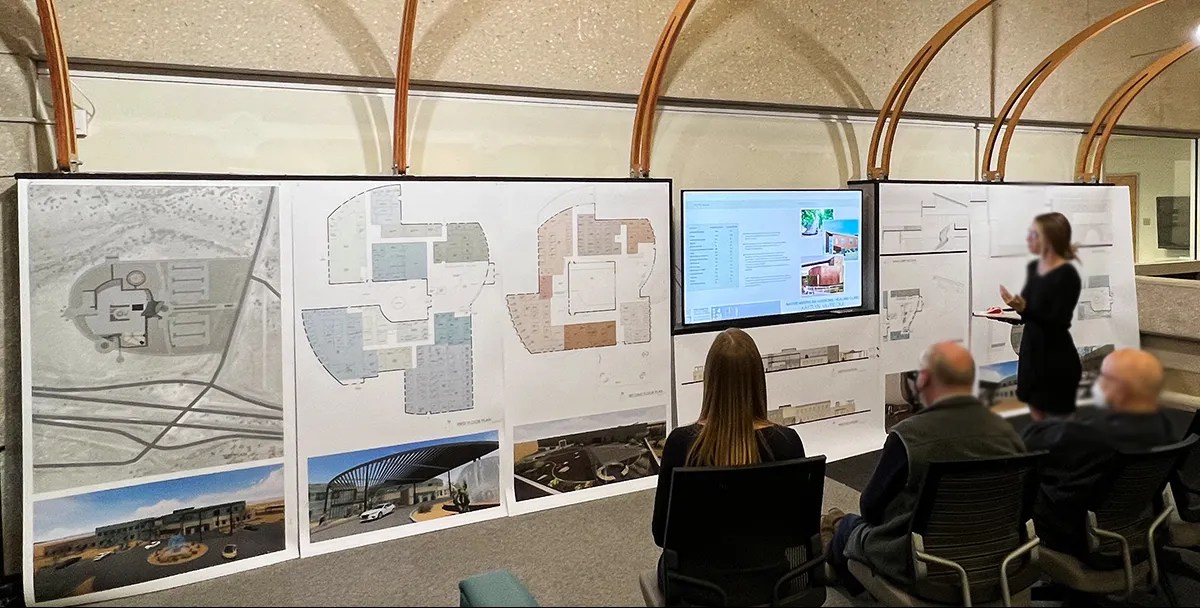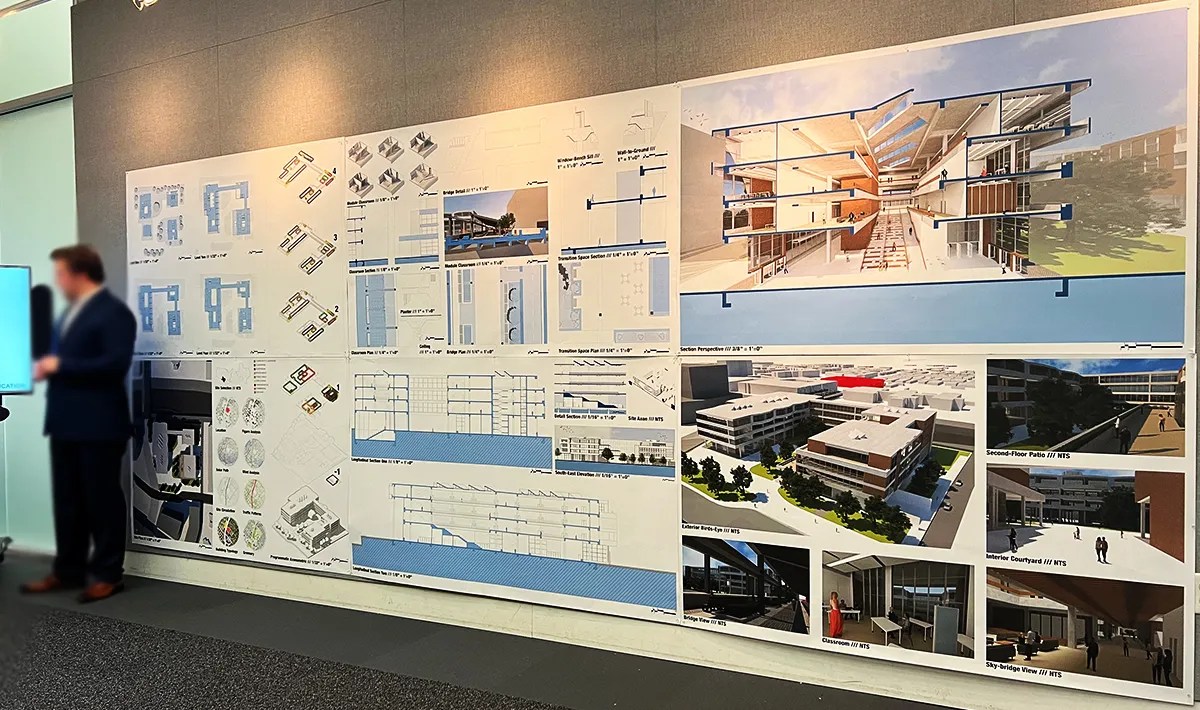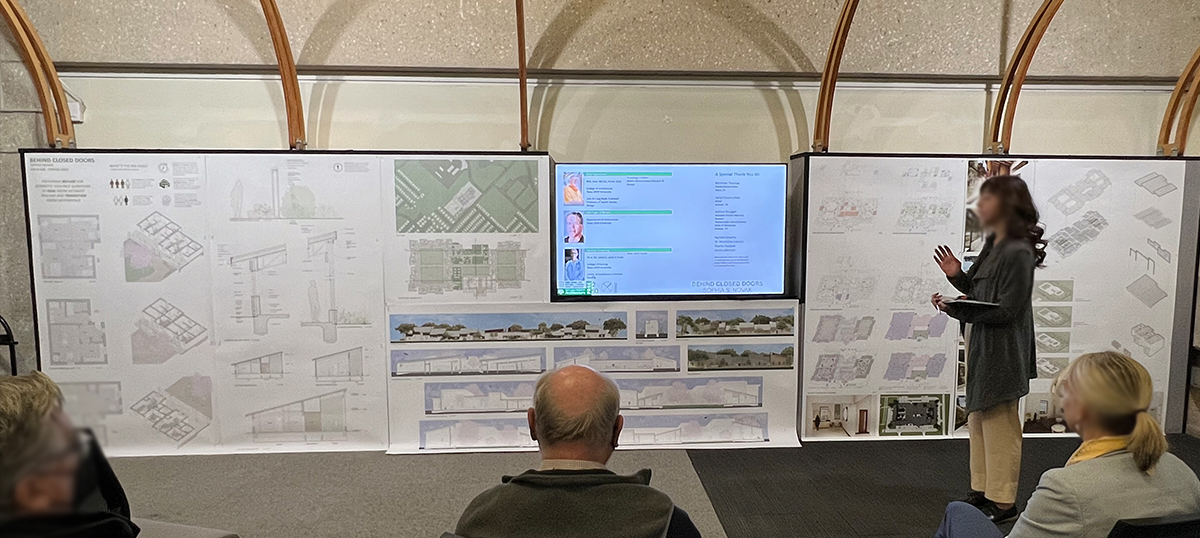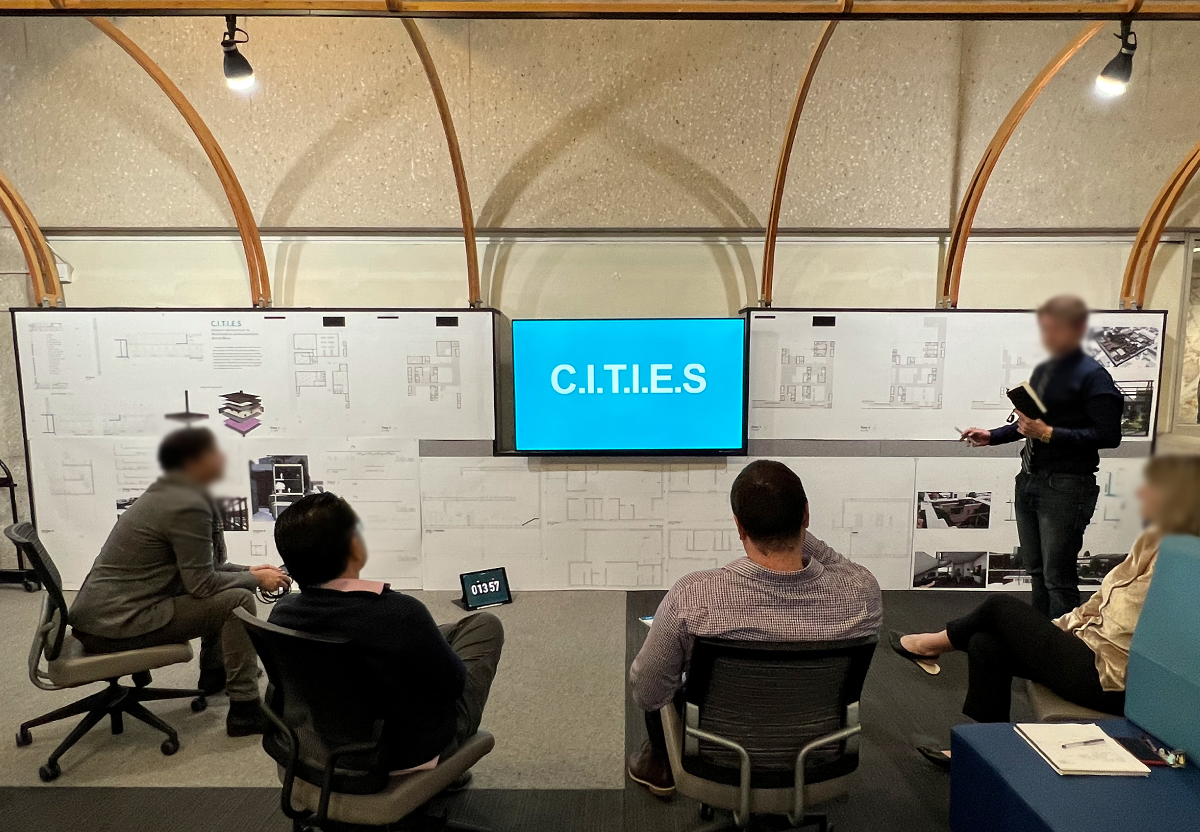So I have spent the first part of this week in ten-hour days of project reviews. These are Masters of Architecture candidates who are conducting their master’s thesis presentations. I have been in reviews on the hour almost every hour for two days this week. I still have more reviews on Friday, but those are just typical mid-term reviews for other studios. Needless to say, it’s been a very long few days.
A Long Year
So these presentations are by my graduate-level studio students. This is the culmination of the previous semester and this first half of the semester of study. The process here seems a bit unusual in its timing and process. But the “final review” for a spring graduation must be essentially conducted in March. So it typically happens before Spring Break week. That was this week. This also provides some time for additional work should it be required. The students still have work to do on their projects after this review, but the goal is that they are able to display a certain level of competency in architectural skill to be “approved” for a May graduation. This review, in essence, is their final exam and receives a pass or fail type approval from their advisory committee. The presentations were a mix of digital and printed materials. A definite result of pandemic education structures. Previously they were all fully printed presentations.
Project Process
Each student chose their individual architectural project to develop. They began last semester with research and conceptual study. There is a wide range of projects and types that these 35 graduate students cover. They have a thesis committee of 3-4 faculty members and then me as their studio instructor. I have 11 students in my studio that have been with me since last August. Basically, I work as their project manager to keep them on task and producing work. That work is then reviewed by their committee chair and members at milestone intervals. Feedback is provided, and I continue to play the role of PM. I strive to become another part of the committee in a sense so that I can help push the students in the direction that their committee also desires. At times, that can get a bit tenuous, but it is an amicable arrangement for a vast majority of the time. I would say in those times of tension, it is my desire for them to make more forward progress versus the notion of more iteration and contemplation from their committees. In the end, it all seems to manage itself out.
First Semester
The first semester of work is mostly research and conceptualization. A large part of this process is the students crafting their own project intended to make some type of architectural statement. Students choose research on project type, site locations, precedents, etc., to establish their project scope, goals, and direction; all of this work is student-driven. They determine all the project parameters acting as their own client, so to speak. The project type, location, program, and goals are all part of this work created by the student in the first month of the semester. The task then is to take that information and propose a project solution as the scale of work they have selected. I say this because some have chosen a 6,000 sq ft project in their hometown, while others may have an entire urban development as their project. So the scale and scope can vary widely. This sometimes causes issues for students, but part of my job is to help them manage some of those issues. The first semester culminates (or should) in a conceptually resolved project.
Second Semester
Then in the first half of this second semester, they develop the project further. The goal is to work at different scales at this point, mostly smaller but also, in some instances, larger scales. This is done to prove that notion of competency in architectural thought and creation. So we get into materials detailing very quickly in this phase. For some, this is a step out to refine the larger impact of the project in its broader context. For others, it is the deep dive into construction details, material realities, and specific moments in the project. My goal is for the students to hit both of these areas and refine the work that they have completed thus far. Depending on the scale of the proposed project, portions of this are easier than others. Again the ideas of doing this on a 96 story urban mixed-use tower and then on a rural downtown renovation/adaptation are extremely different tasks. This is why I see my role much like that of a PM on these projects. I know the parts and pieces that must be present. My guidance is used to help them create a clearly defined and represented project as much as I possibly can.
While this is my first year of teaching within this process, I find it interesting, and it presents some unique challenges for me as an instructor. But it is also highly related to my role in my office as an “overseer” of various and multiple projects in process under my supervision. The main difference is that I am not as involved on the client side here, which I would consider their commitment to be the closest thing to a client. It has been interesting to work through this process and figure out how to best serve each student. While the work is not over yet, this week was a large milestone in the process. They are now tasked with creating a book publication of the entire project with additional writing requirements and graphics. For the next five weeks, they will work on this publication and refine their proposed projects’ verbal and graphic representation. It will continue to be interesting. I am also looking forward to book production since I have always been obsessed with that process myself.

